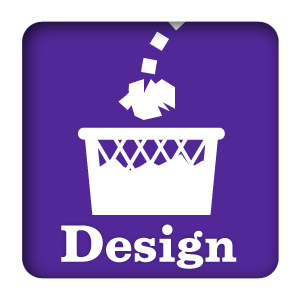For many years, there’s been speculation over Apple producing a branded flat-panel TV. Ever since Apple confirmed a focused shift into consumer electronics, the company has been linked with the ultimate consumer electronics item, the home television set.
For just as long, I’ve been steadfast against the conclusion that Apple was ever going to make such a product. Apple doesn’t jump into markets just because they exist. They don’t make car radios, stereos, game consoles, Blu-Ray players, blenders or microwave ovens. Even though, one could argue if they did, they could sell them like there was no tomorrow.
I now know that times have changed. Apple is going to make an Apple television.
When I worked in an Apple retail store, back in 2004, something customers consistently asked me about was a phone. “When was Apple going to release a phone?” People would ask over and over again. The question came on a near-daily basis. Folks just seemed convinced it was inevitable. After all, cell phones were about the same size and shape as an iPod. It just made sense. If Apple had just stamped their logo on a phone, they could have made billions overnight.
We all know how this worked out. By 2007, Apple had developed a great product, and released the bewilderingly fantastic iPhone. But it was not in response to the demand for Apple to make a cell phone, it was because the engineers at Apple had a great mobile internet device, and it was fashioned into a cell phone.
The same consumer expectation goes for a TV. To the public, it seems inevitable that Apple and TV will meet up. When the iPod started to show color pictures with the iPod Photo back in 2004, almost everyone began to anticipate moving images as the next step. iPods would get video, then Apple would make TV’s. It was a matter of time, so most people thought.
But then Apple threw a bit of a curve. In 2006, Apple introduced a product called Apple TV, but it had no screen and didn’t hook up to your cable box. It confused a lot of the customers at my store. We had it out for display, hooked up to a Sony Bravia. People would come in, see the screen, and say “So Apple finally made a TV, huh?” I’d ever so politely point out it was a Sony, and the Apple TV was the small hotplate attached to it.
“How do I record shows on it?” was the first question. “Where do I plug the cable in?” was another. I was good at re-focusing on the things Apple TV did, rather than what it didn’t do, and I led my store in sales of the device. I loved the Apple TV and still do. Unfortunately, most customers anticipated a functionality that approximated today’s DVR boxes, so Apple TV did not deliver quite what they wanted.
I got into some very long conversations with customers about TV, and heard a very consistent message from my customers. They wanted to “throw away the cable box” and replace it with the Apple TV. For some, the original Apple TV was a great match. They were movie and HBO lovers who could get both from the Apple TV. For others, though, who watched basic cable and broadcast channels, this was not the solution they were hoping for.
You cannot underestimate how much people hate cable. The loathing and anger in the voices of people who I would talk to was very real. They hated paying $40-80-100 and more a month for channel “packages” just to get the select channels and shows they wanted to watch. Not only did I get the impression they disliked cable, they would do just about anything to cut the cord, including giving up TV altogether. It was downright un-American.
About the Apple TV
The Apple TV was actually invented by an Apple store Genius. As I understand it, the genius essentially took an iPod, re-wrote some of the iPod OS and added video out. That was the very first version of the Apple TV, before corporate took it in and refined it.
That was also the way Apple has thought about it, as a highly modified iPod. Even today, you’ll see the Apple TV grouped in with iPod devices on the Apple Store page.
With the second generation Apple TV, Apple has moved to a cloud model and tossed out the hard drive. They’ve re-written the software to be an iOS device, and dropped the price down to a very aggressive 99 dollars. Despite the failure of TV rentals, it’s sold well, probably better than the original. Yet it still hasn’t been the breakaway product Apple was hoping for. It’s still just a “hobby.”
The company hasn’t given up, though. They still believe they can make the killer product they’re known for. They’ve spent a lot of time and effort putting together a back end that should have made the Apple TV a success.
Apple has an incredible infrastructure built with movies, TV series and music. iTunes is the biggest library of its’ kind and offers a tremendous benefit to customers inside the Apple product circle. Call it a walled garden, if you must. So, just based on content, one could reasonably assume that a link of all this stuff to your TV would be a break-out product.
But it isn’t. Why not? What is Apple getting wrong?
One would think that the emphasis on a la carte purchases would be a tremendous attraction. The on-demand features found in the newest internet, cable and satellite TV solutions are the focus of the industry. DVRs are essentially customer-curated on-demand services. Select a show on a menu, and watch it, anytime. It’s generally thought to be sate-of-the-art technology. People love it. Yet, it’s nearly identical to the same service Apple has been offering for years. As the on-demand market increases every year, Apple TV is stalled.
Back to my customers in the store. Not having answers for my customers is where the wires seem to get crossed. I never had good answers for the most common questions about the Apple TV: “How do you record?” and “Can I get rid of my cable?” Those questions need to have a solid, direct, simple answer.
The customer already understands TV – at least they think they do. They see the TV as a big screen where they get live shows. They watch it live or set recordings. Their experience is that if there’s something on, they’ll watch it. If nothing’s on, they’ll see if they have something recorded. And of course, a lot of the time, they also watch when nothing’s on like a mindless zomboid. When I say “they” I mean me, you everybody. Admit it.
Apple provides a “most of the way there” solution in a la carte purchases that go through a small box you attach to the TV. But it’s a totally different way of thinking about TV. To use it, you have to re-educate the customer. That’s a problem. They don’t want to be re-educated. They know TV. TV is a foundation of our society. It’s carved in rock like Mount Rushmore. Think how long VCRs were around and still blinked “12:00” all day. Customers are not interested in learning a “new” way to watch TV.
Also, consider the form factor. The Apple TV box is just another thing to add to an already complicated set of TV inputs. A game console, a cable box, an antenna, a DVR, a Blu-Ray and even more items are already attached. Personally, I use 5 of the six inputs available on my TV. Now try to explain this setup to the blinking “12:00” crowd.
“Grandma, all you have to do is plug in the HDMI cable to input six and then use the remote to choose the correct input. Follow the input selection menu by pressing menu on the remote. Use the arrow keys to navigate. Then make sure that the Apple TV has your wireless password and is connected to the internet. Use a different remote for that. Type it in using the arrow keys again. Then purchase shows and movies through the Apple TV by using your iTunes account. They’ll download in about a half hour, and be ready to watch. It’s that easy.”
That’s not going to happen. It’s next to impossible for customers to change their decades-old perceptions. So instead of providing a whole new way to watch TV, present what they already love, and improve upon it.
Understanding TV
How do people use their TVs? It’s been trouble for Apple to get this right, and I blame Steve Jobs. I blame him for being a person who had such an engaging life that TV wasn’t really a big factor in his day-to-day experience. He owned his own movie studio, for goodness sake. Why watch TV? He was simply out of the loop when it comes to understanding television and its’ users.
In fact, if he was anything like people I know who “never” watch TV, he was probably a bit proud about it. Maybe even a bit of dick. Though, as Steve got into Disney and their TV operations, I’m sure he started to embrace TV a little.
That’s why Apple hasn’t given up. We know that Steve was quoted in the Isaacson biography as saying he had “cracked” the TV problem. Great! Apple’s fixed the problem!
What’s the problem?
There are actually three problems with internet TV: too complicated, lack of content, and getting people to buy in.
Let’s address all three problems.
Simplicity
- Simple set-up. Simply plug in your TV, hook it up to your network and done.
- Simple programming. Channels become apps. Stream, record and buy.
- Simple interface. One button remote. The screen is the interface.
To expand on each point:
Simple setup. The setup would be very similar to the existing Apple TV setup, but with a far, far better remote that can handle password typing like an iPhone or iPad. Put down the Apple television, plug it in, password, go.
Simple programming. This is going to look a lot like the iOS interface, with apps for “channels.” The current Apple TV setup segments everything by type, which is a mistake. It doesn’t matter if something’s a podcast, a live stream or recorded. People think in terms of channels, or in terms of shows. No more text-menu navigation. Pick an app for a channel or show. Spotlight search for programs. Watch live streams, or record, or buy.
Simple interface. A one-button remote that lets you control the TV like an iOS device. How? With Kinect-style gesture gesture recognition and waving your ams like an idiot? With Siri, shouting commands over the background noise? With a Wiimote style device, waving it around innacurately? With the current, limited, Apple TV remote? None of these would work. Fortunately, Apple already has the perfect interface.
The interface is going to be touch based. The touch interface is perfect for TV use. Gestures and point and click are ideal for this type of control. How? Use an iPad or iPhone? No. They’d die too quickly and are used to do other things at the same time you need to control the TV. The TV needs a dedicated control that you can use quickly. You’d use a Magic Trackpad device.
Here’s how:


A blank-slate-faced device with a clickable pad rests in your hand. You can use it much like an iPhone/iPod touch with thumbs or fingers. The device works like the Magic Trackpad, using bouetooth, recognizing quick gestures for pausing, volume control and channel changing. But this pad has one major difference. It has sensors to “see” your fingers. Even when they’re not touching the screen. The sensors then put your fingers overlaid in silhouette on the big screen.

Now you can see what you’re doing. After a few moments to get used to it, you’ll use your fingers just like you do on an iOS touchscreen. Clicking is easy, control is easy and even typing is much more convenient. You get the best of both worlds. A simple remote and an even simpler interface. No more million-button devices that need a manual. No more looking at the remote and taking your eyes off the screen. This also opens up the entire iOS interface as we already know it, and can turn the Apple TV into a real iOS device that can run apps and control them as we already do, with minimal modification or learning, if any.
The reason the remote has no screen is because looking at the remote is mistake in interface design. One we’ve lived with for a while, but it’s a mistake. You want to look at the screen at all times and still control the TV. You’ve probably already trained yourself to do it with the remote you use now.
With no lit display, the remote can last much, much longer. TV remotes last for months, and people like that. Also, if you update the device’s capabilities, you don’t have to work within the confines of fixed remote buttons.
This is all speculation on my part, but if I were going to design the easiest possible interface for a TV, this is how I would do it. I expect Apple has a similar solution on the way.
Lack of content
Google TV has been dying one of the uglier deaths you can imagine for a product. The networks crippled it from the get-go and have made no effort to even meet Google TV half-way. Dead product walking.
How do you avoid this? Well, networks are old institutions that are as hard to move as the music industry was when iTunes was put together. But networks also have another issue to deal with – providers. Whether it’s local TV affiliates or cable/satellite, these people have a lot of control over the networks and have kept customers from getting a better deal. Affiliates don’t want the networks to cut them out of the loop, and cable/satellite loses subscribers for each download.
The best way around this issue to go right past the networks and head straight for the producers. Networks themselves are middlemen, buying shows from producers and studios. As I write this, Netflix has just announced a revival of “Arrested Development,” which is as close to this new no-network future as we’ve seen. In a few years, will TV networks even exist? TV shows will be developed, VC investors brought in for production costs, and then sold direct to viewers through digital distribution. Sports leagues will sell games directly to viewers. You’ll subscribe to news services. The Apple TV will be a big part of this shift.
But until then, Apple will have to bend a bit for the networks. They still own the most desired content. But putting individual network-branded apps on a TV, it will give them the control they want. They can show ads and they can charge a price they want. We also know that Apple has an ad-supported system that CBS has opted out of. This system is a split in revenue between the network and Apple, (70/30, anyone?) and one can see this same split being made available to anyone who opts in to the program. It won’t matter it its a monolithic network or basement talk show. Shows will sell based on merit.
In time, studios and producers will go for the direct route, with higher profits as the carrot. They’ll take a look at what app profits have done for software creators, and then hope for similar results for their content. The lack of middlemen also means much more money and creative control for them. Apple will win that battle, and in a few years, you’ll buy individual shows or subscribe to a series, and not pay another monthly cable bill again.
Buying in
So, once you have a killer product, what will convince buyers to go get it? Changing your TV setup is the closest the average consumer gets to rocket science in their lives. It’s a lot of work, and a lot of hassle. To get folks motivated to switch to an Apple TV, you need not only a killer product, but killer content.
The killer program that could kick off the popularity of the Apple TV is the NFL. The NFL drives television in the United States, and always has. Channels that feature NFL games and programming are the most widely watched channels on television. Fox broadcasting grew from a rag-tag group of local stations to a Nielsen ratings leader and multi-channel cable content provider when they got an NFL contract decades ago. The same thing could happen to the internet TV field, and specifically, to Apple.
Apple is already following this idea. The Apple TV currently offers NBA, MLB and NHL packages. DirecTV is the exclusive provider of the NFL Sunday Ticket package that lets viewers watch all Sunday afternoon games, and has that contract locked up until 2014. However, the NFL created a new addition to the Sunday Ticket package, a broadband version called “Sunday Ticket To Go” that has been available for two years to DirecTV subscribers, and will be available in 2012 to those who don’t subscribe to DirecTV. It’s already a part of the PlayStation online service. In other words, the killer Apple TV program waits upon the horizon in the Fall of 2012, ready for Apple to take action.
With the general interest in iOS devices, there’s a big segment of the population who’d be very eager to have an iOS device as their TV. As noted above, people are literally asking for this product. Apple’s got some great momentum. So a combination of killer interface, great programming and motivated buyers make this the sort of big deal Apple has always wanted the Apple TV to be.
Potential problems: Content providers will balk at this arrangement. They like to control the shots, and Apple won’t let them do that. CBS has already opted out – have the other networks? So while Apple may have some killer content to offer, they may not have all the content people will want.
That will be an issue because Apple’s television won’t play nicely with the outside world. It may not even have HDMI ports. This is Apple we’re talking about. They’ll want complete control over the experience, and allowing other input sources takes away that control. Unless they have some sort of IR-based bridge to control outside devices, this may be a closed box.
Bandwidth is also going to be a major issue. You’ll need a good pipe of bits coming into your house. Buyers may not really think about that when they buy the device, and be disappointed. Other may think they have a good connection, but get frustrated when the shows stutter when someone in the house jumps on the internet. It might also be a good place to put an AirPort device, integrating it with the television. By hooking up the internet connection directly to the TV and bypassing a wireless setup, it might make things faster.
Don’t forget that the internet providers are already whining about video streaming stressing out their service. This will just make it worse.
So, like any Apple product, there will be some teething. It’ll take about a year to shake out.
What’s in it for Apple?
Another fantastic device people love, another industry remade, and another round of feeling like they nailed a product.
But in terms of sustainability, they can now sell another device with another revenue stream that doesn’t overlap too much with what they already have. There won’t be a lot of internal cannibalization.
As for the actual physical product, TV screens are diving in terms of price, rising in quality, and Apple can build in a healthy margin to a mid-to-high-end product. They can make different sizes of screen at different price points, a strategy Apple likes. The retail stores are ideal showcases for it, and will draw crowds. AppleCare can be expanded to cover it. The content is already in iTunes/iCloud. It fits in very nicely with their infrastructure.
If you think about it, when it comes to Apple, the last ten years have been a story about the expansion of screens. Apple first sells devices with a two-inch screen, then a 3.5-inch screen, next a 10-inch screen, and now add in 36/42/50 inch screens. They already sold Macs in 11/13/15/17/24/27 inch screens. The TV was really the last of the great form factors of screens Apple didn’t have a stake in. What’s left?
Can they turn over TV sales like they do iPhones and iPads every 2-3 years? No, but they can do it every 5-7 years, like the mac buying cycle goes.
I, for one, want to say that I welcome my new TV overlords.










